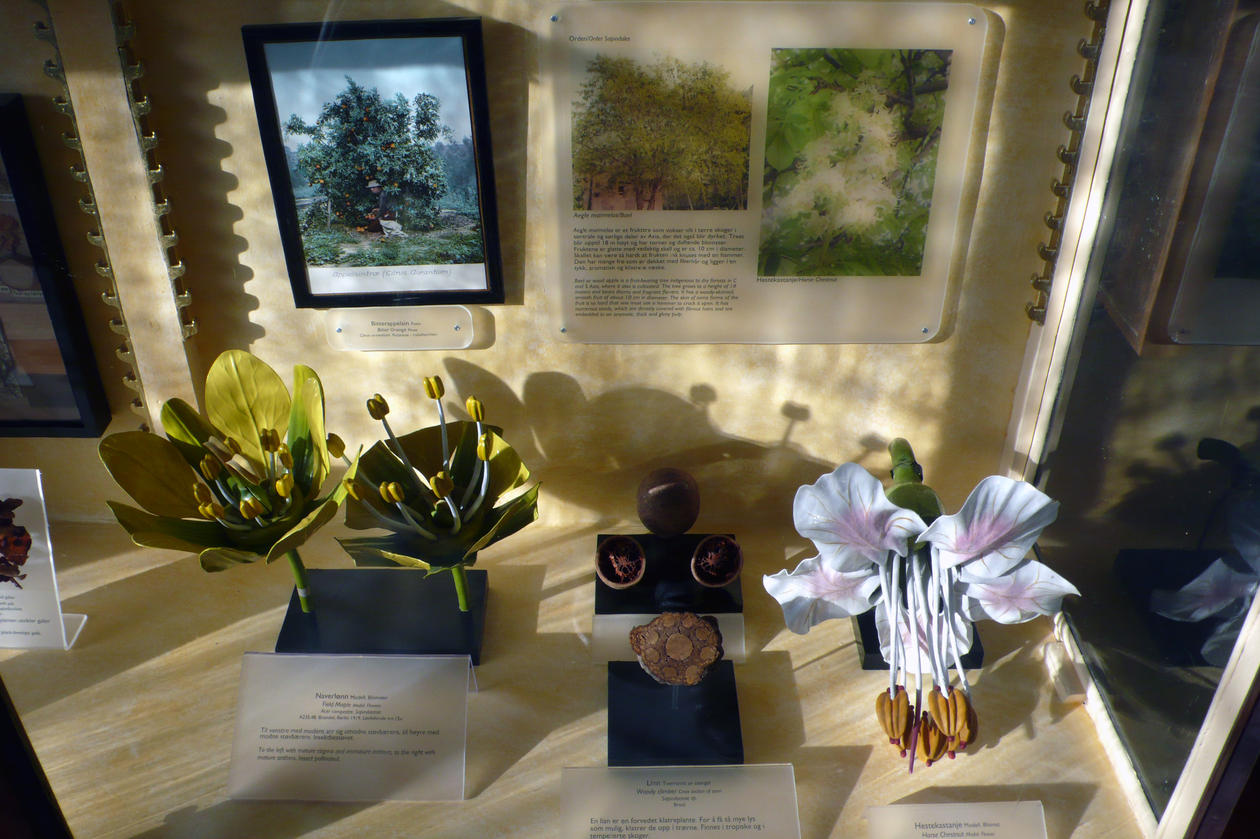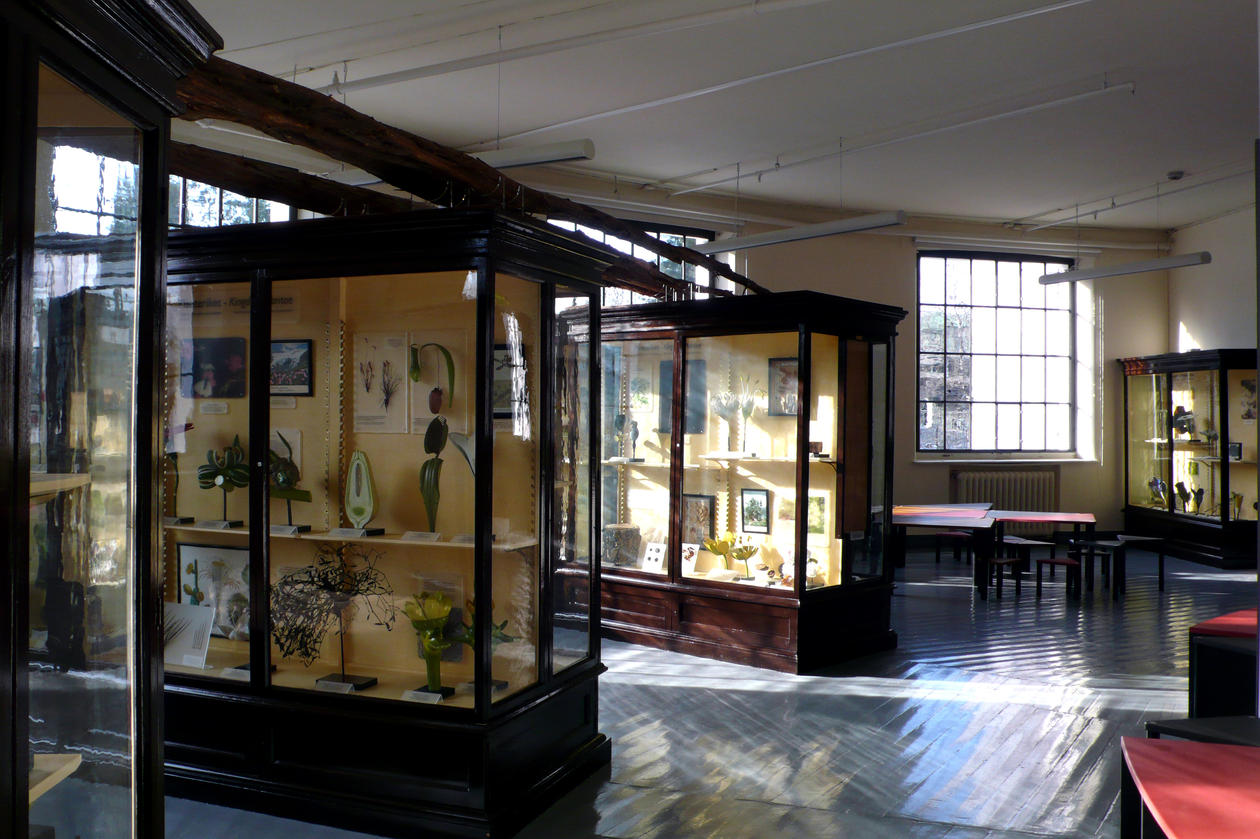Shapes of Life at Bergen Museum
The Natural History Collections are once again open to the general public. One of the news is the beautifully restored botany exhibition titled: "Shapes of Life".
Main content
The original exhibition Systematic Botany was completed in 1920. It comprised all the main plant groups in addition to fungi and algae, shown in 27 display cabinets. The exhibition has now been restored and is titled Shapes of Life. A large part of the old objects has been kept, so have also many models, fossils, photographs, and drawings. The taxonomy has been updated using a system from this century. While all previously belonged to the plant kingdom, the objects are now grouped into 8 kingdoms, where the plant kingdom and the fungi kingdom are the dominant ones. The old display cabinets provide the setting for the objects, with written information and supplementary photographs on frosted plexiglass. The exhibition also contains a digital presentation of many plants made by Beate Helle.
Person with academic responsibility: Mary Holmedal Losvik. Design of the exhibition: Anne Aspen.
Historical teaching models
Last, but not least, take a closer look at the many beautiful models produced a hundred years ago, most of them from papier-mâché and glass.
One of the models is of a Valerian (Valeriana officinalis). The model was made in papier-mâché and was bought from the firm Brendel in Grünewald, Germany in 1919. Valerian grows in temperate zones in Europe and Asia. An introduced medicinal herb, probably from the Middle Ages. Tea from the root may have a sedative and sleep-inducing effect. In Norway, it is widespread in the eastern parts of the country, with an uncertain locality in Os municipality, Hordaland, West-Norway.


